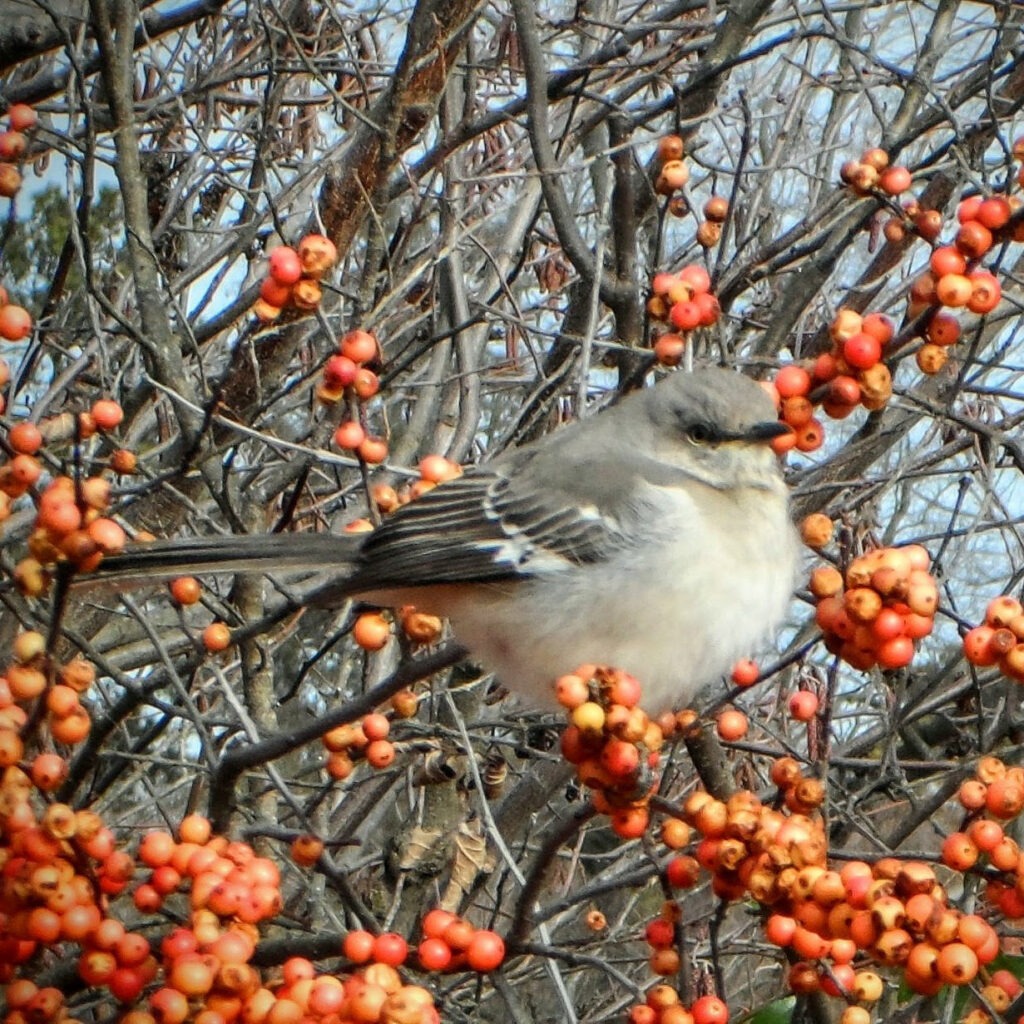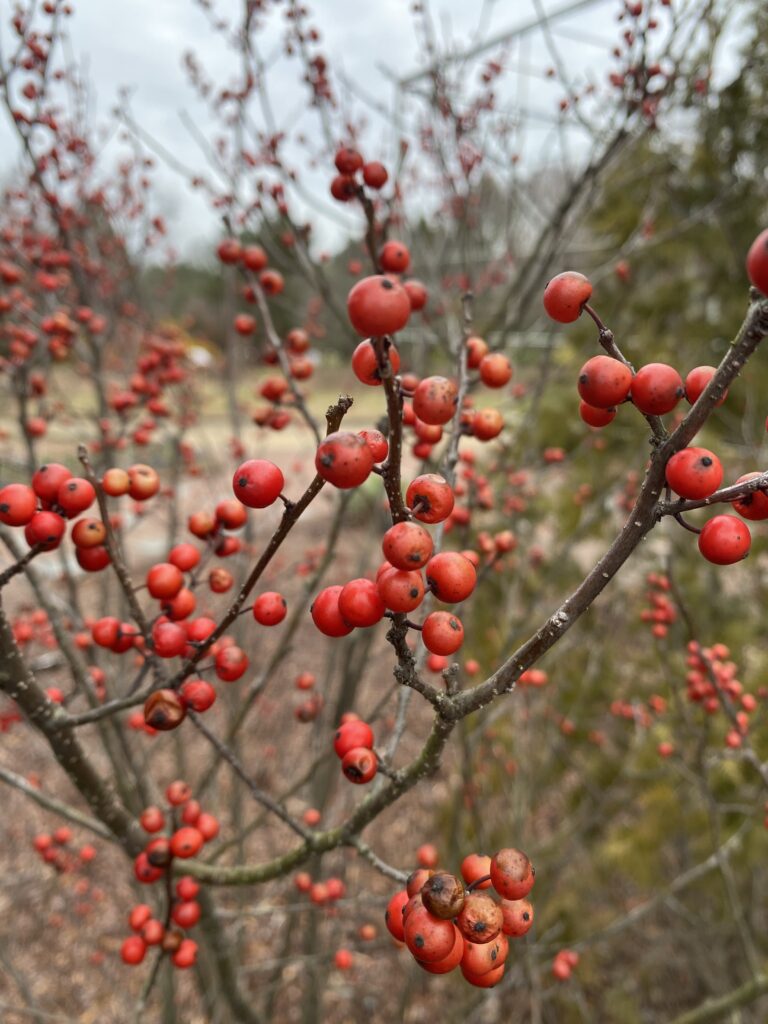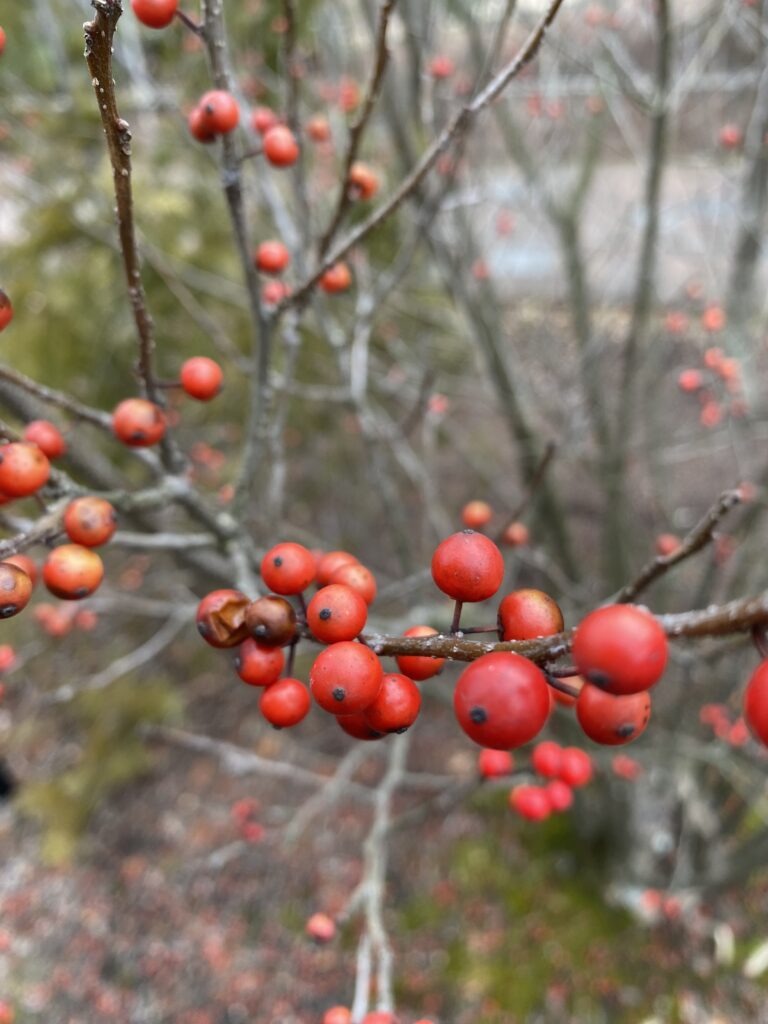Virginia’s Native Winterberry
Nature tosses a spray of scarlet orbs into the lackluster landscape this time of year, decorating the bare branches of Winterberry holly with much needed nourishment for local wildlife.
Winterberry in the Landscape
Winterberry holly (Ilex verticillate), a multi-stemmed shrub with an upright, rounded habit, is a Virginia native. In its natural environment, it grows to a height of 15 feet, colonizing in large thickets in the marshy soil of swamps, low areas, ponds and stream beds. It will thrive in the same well-drained moist conditions under cultivation, where it matures to 8 feet.
The leaves of Winterberry holly are elliptical with sharply toothed edges, their undersides covered in pale downy fuzz. Unlike most hollies, the shrub is deciduous. Its dark green foliage turns yellow, or in some cases purplish-green, in late autumn. Leaves blacken with first frost, and then shed completely to reveal masses of red drupes packed in dense clumps along bare stems.
Although it is most dramatic in mass plantings, Winterberry is more than worthy of a spot in a shrub border, hedge, foundation planting or native plant garden. Its red fruit is especially striking against a backdrop of taller evergreens. And because it adapts easily to both moist and dry environments, it is an ideal choice for a rain garden.
It Takes Two
As with most of its relatives in the holly family, Winterberries are dioecious – a shrub is either male or female. Both genders produce flowers, but only the fertilized flowers of the female plant will set fruit. In April and May, male Winterberry develops inconspicuous clusters of 7-12 white flowers whose yellow stamens produce pollen. The female’s flowers grow 3-4 to a cluster, each with a delicate green pistil. A single male Winterberry will generate enough pollen to fertilize three to six female plants. The couples must be of the same species, (so that they bloom at the same time,) and be located within 40 to 50 feet of each other. Cross pollinated by bees and some flies, the female flowers give way to bright red drupes in early autumn which will persist through winter and often into early spring.
In spite of its name, Winterberry doesn’t bear berries at all. Its tiny red, orange and gold fruits, (depending on the variety,) are called are drupes. Like peaches, apricots, olives and cherries, they are fleshy spheres that cushion a central stone containing 3-5 nutlets or seeds. Winterberry drupes are loaded with sugar, making them rich in the calories that birds need to maintain body temperature in the cold of winter. The fruit lasts long after other food sources have been depleted because the lower fat content makes them less likely to turn rancid and rot.
Sustenance and Sanctuary
According to the West Virginia Department of Natural Resources, Winterberry fruit is preferred forage for ruffed grouse, bobwhite, wood duck, robin, waxwing, bluebirds, thrushes, woodpeckers, catbird, flicker, brown thrasher, ducks and wild turkey. The endangered wood thrush depends on Winterberry to fuel its winter migration.
In spring, songbirds nest in its branches while honeybees and butterflies collect pollen and nectar from its flowers. The shrub serves as the larval host plant for about 40 species of moth. And while the leaves and stems are not a preferred source of browse, deer, moose, cottontail rabbits, racoon, red squirrel and snowshoe hare feed on them when other food sources are scarce. The drupes are poisonous to pets and people.
There are 14 different species of Winterberry in the collection at Lewis Ginter Botanical Garden – species whose fruit ranges in color from deep scarlet to bright orange. They’re easy to spot from mid-December through early spring when their berry-laden branches stand in sharp contrast to winter’s stark landscape. You’ll find an Ilex verticillate at the entrance to the Healing Garden. Start there and see if you can locate every one of them.


